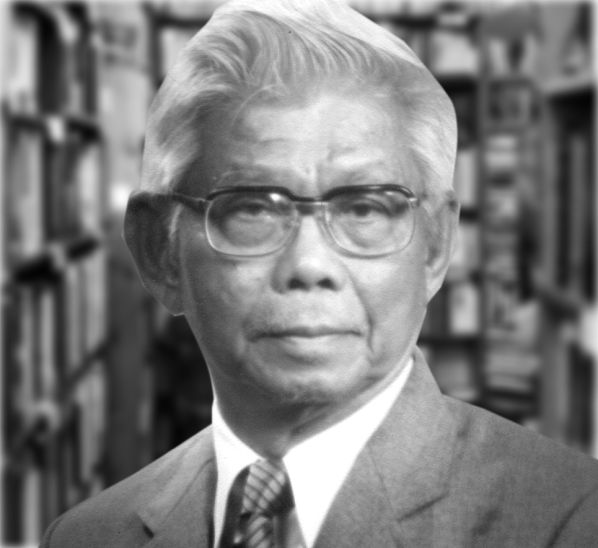Modernization and urbanization tend to blanket the past with asphalt and concrete. Often the artistic creativeness of Asia’s ancient civilizations is submerged in glass-faced high rise offices and homes copied from Western magazines. Painting has suffered as the mass culture of affluent societies becomes dominant. Every year downtown Singapore, Jakarta and Manila become more alike. Peoples incline to lose their distinctive artistic expression and the world loses cultural uniqueness in an era of accelerating conformity.
Thailand’s artistic heritage has roots that reach far back into the prehistory of this region of Asia. The kingdom of Nan Chao, that once ruled now Southwestern China and was ravaged by Mongol hordes in 1253, provided the human stock to establish a new civilization at Sukhothai. War again devastated that great cultural complex and Thais shifted their kingdom’s capital down the Chao Phraya River to Ayutthaya, from whence it was transferred first to nearby Thon Buri and in 1782 across the river to Bangkok. Over these centuries Sinicized art and architecture were reshaped by powerful Indian and Khmer introductions and inspired by Buddhism, to give Thailand its historic identity.
Prof. FUA HARIPHITAK has made a life-long profession of seeking the origins of his national artistic tradition, preserving the tradition, and through painting, restoration, writing and teaching, enlivening it with a future. Born near the banks of the muddy Chao Phraya in the then lush orchard community of Thon Buri in 1910, he early became obsessed with capturing the essence of beauty in nature. Admitted to the first class of the School of Fine Arts of the Royal Fine Arts Department, he was soon experimenting with numerous techniques of painting. Already he had mastered the drawing that is the grammar of all plastic art.
Seeking insights to the inspiration for Thai art, Prof. FUA in 1940 accepted an opportunity to study at Visva-Bharati University at Santiniketan in Bengal, India, founded by famed educator and poet Rabindranath Tagore. Interned by the British during World War II because of Thailand’s alliance with Japan, he pursued studies of philosophy, yoga and sculpture, despite suffering from malaria and anemia. Back in Thailand in 1946 his awakened appreciation of classical art prompted him to paint copies of old murals at Ayutthaya, Sukhothai and Phetchaburi. Discovering their dilapidated state he found his life’s mission in preserving these treasures for generations to come. Means must be found, he determined, to counter tropical humidity that had severely weathered the tempera used for many murals. As professor of painting at Silpakorn University after 1947, he involved his students in his search for enduring chemical paints which could be used by the Fine Arts Department for restoration. Graduate study in Italy in 1954 and 1960 afforded him additional expertise which was enhanced by his observations in European galleries.
For the 1982 Rattanakosin Bicentennial celebration in Bangkok Prof. FUA undertook his crowning labor — restoration of the Buddhist monastery library, Ho Phra Trai Pidok, in Thon Buri. Named supervisor of this work in 1968, he recruited and directed craftsmen and painters from throughout the kingdom. Panels and doors were carefully carved true to the originals of two centuries ago. Some murals were restored by him, others were redone and the entire library was renovated to become one of the architectural treasures of Southeast Asia.
Setting aside the prospect of a distinguished and lucrative career as an accomplished artist, Prof. FUA chose to devote his talents to restoring artistic values from the past and teaching students to share this concern, while writing to provoke Thais to think and ask questions about their civilization. Professionally and personally he has shunned popularity for performance. Beneficiaries are his fellow Thais whom he has helped realize that within their some 23,000 wats or temples are found many of their greatest national treasures.
In electing Prof. FUA HARIPHITAK to receive the 1983 Ramon Magsaysay Award for Public Service, the Board of Trustees recognizes his preserving and teaching a younger generation art forms that distinguish Thailand’s unique graphic and architectural heritage.
I am an artist who is not very good at speaking and the Award is too overwhelming for me to express adequately my appreciation of the honor you have kindly bestowed upon me. It is in humility that I accept it.
When news of the Award reached the public in my country, I was glad to learn that most people were quite enthusiastic. I think the Award gave much encouragement to artists, especially those who wish to preserve national heritage as well as those who are determined to create something of great value for truth and beauty.
On an occasion like this I cannot help but think with gratitude of the great masters of the past, such as the Venerable Phra Acharn Nak who created a work so profound that I felt I must devote my life to studying his creation in order to understand it and conserve it for the younger generations.
I must also mention my indebtedness to those who taught me the art of painting and the technique of conserving mural paintings. I learned these valuable lessons in my own country, as well as in India and Italy. It is the late Professor C. Feroci (now known in Thailand as Silpa Bhirasri), an Italian by birth who lived as an Asian and died as a Thai, that I owe more than anyone else. Without his encouragement I would not have come this far. I wish to share this honor with all my predecessors and teachers, as well as my pupils and contemporaries, especially those who devote their lives to serve the arts rather than seek personal fame and wealth. Art longa vita brevis.
Last but not least, I wish to thank all trustees of the Ramon Magsaysay Award Foundation for being so generous in understanding our work as artists.

